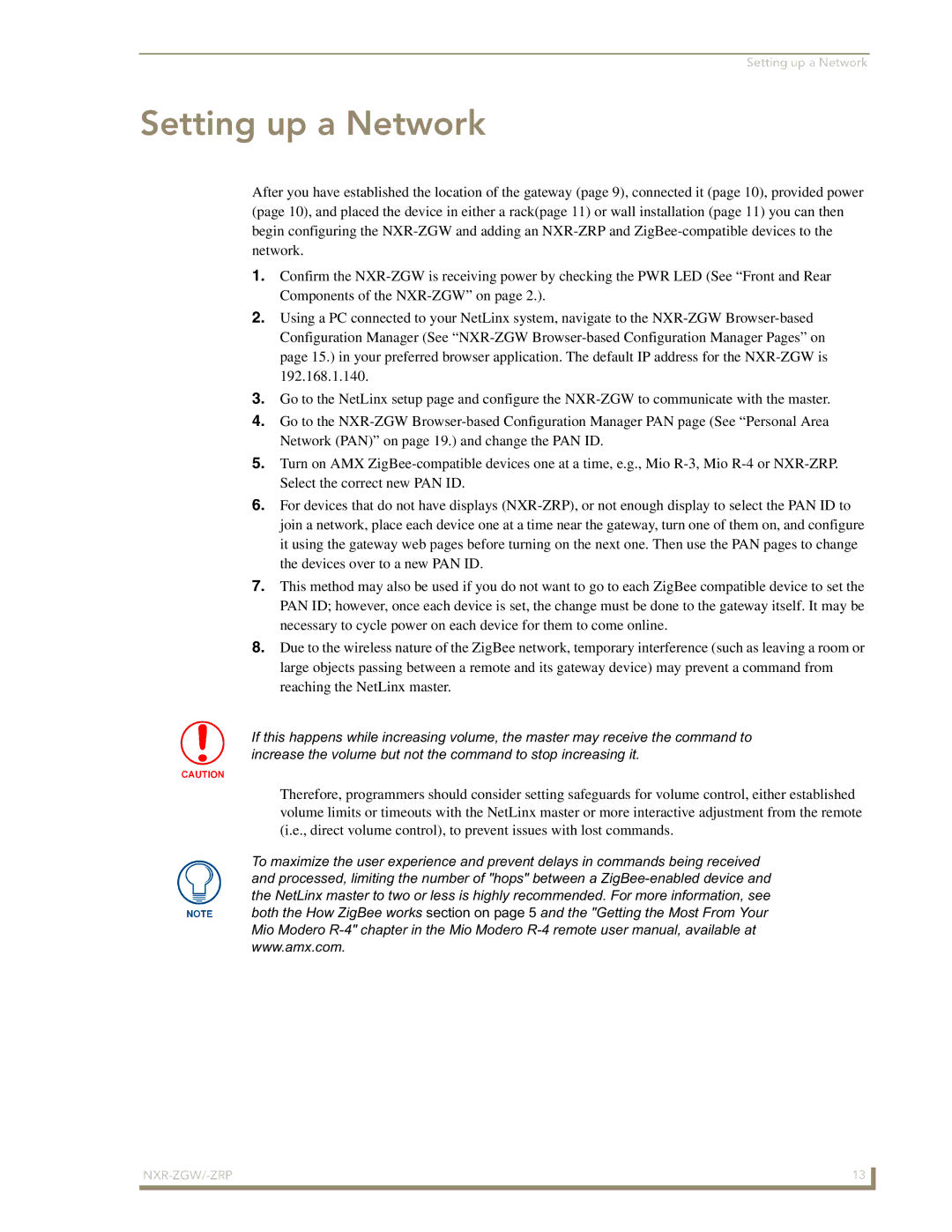
Setting up a Network
Setting up a Network
After you have established the location of the gateway (page 9), connected it (page 10), provided power (page 10), and placed the device in either a rack(page 11) or wall installation (page 11) you can then begin configuring the
1.Confirm the
2.Using a PC connected to your NetLinx system, navigate to the
3.Go to the NetLinx setup page and configure the
4.Go to the
5.Turn on AMX
6.For devices that do not have displays
7.This method may also be used if you do not want to go to each ZigBee compatible device to set the PAN ID; however, once each device is set, the change must be done to the gateway itself. It may be necessary to cycle power on each device for them to come online.
8.Due to the wireless nature of the ZigBee network, temporary interference (such as leaving a room or large objects passing between a remote and its gateway device) may prevent a command from reaching the NetLinx master.
If this happens while increasing volume, the master may receive the command to increase the volume but not the command to stop increasing it.
Therefore, programmers should consider setting safeguards for volume control, either established volume limits or timeouts with the NetLinx master or more interactive adjustment from the remote (i.e., direct volume control), to prevent issues with lost commands.
To maximize the user experience and prevent delays in commands being received and processed, limiting the number of "hops" between a
| 13 |
|
|
